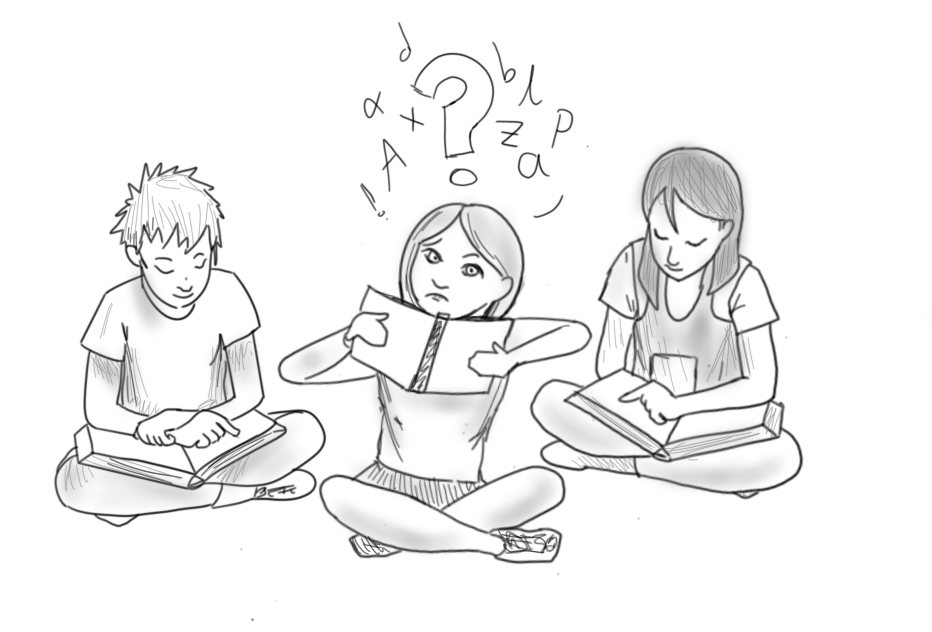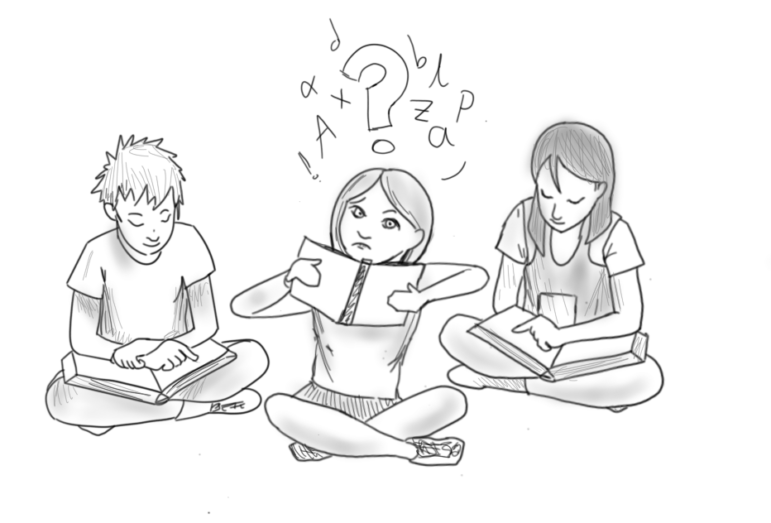
Picasso, Einstein, Spielberg, Disney. These people share not only success, but something more hidden and easily looked past: dyslexia. Dyslexia posed a significant obstacles in their lives, but also taught them to acknowledge their challenges and find ways to work around them.
DIAGNOSIS
The list of successful people with dyslexia goes on. Yet, dyslexic people are often misunderstood as simply being bad spellers or slow readers. Dangerous misconceptions like these can lead people to believe that dyslexia signifies a lack of intelligence, and therefore, is something that can be remedied with enough effort. For junior Sydney Freeman, her parents and teachers knew this not to be true.
“[My parents noticed that] I was a couple grade levels behind in reading — it took me a long time to read anything, and I could not spell,” said Freeman, who was diagnosed in second grade.
She remembers how she felt when she was told she had dyslexia: “When you are little and you are diagnosed with something, you think ‘Oh my God, I’m stupid,’” she said.
Dyslexia is an umbrella term, and different people can experience dyslexia differently. The most common and well-known symptom of dyslexia is the scrambling of letters when reading.
For example, sophomore Jessica Russell mixes up letters and numbers. Even when she may understand a math concept, she can still get the problem wrong because she doesn’t use the correct numbers.
Freeman’s dyslexia presents itself as a mixture of challenges. “I have trouble reading,” she said. “[And] when I am writing, my brain skips over words and mashes words together so they don’t make senses.”
Dyslexia can also be characterized by an inability to break down certain sounds and difficulty with reading comprehension.
For Hillsdale senior Zack Dwyer, things are different. “Everyone [thinks] ‘Oh, you just see the words move,’ ” he said. “That’s not what mine is. I struggle with reading and writing. Reading a page takes me two to three times longer than someone else … If I’m not totally focused on my reading, I’ll forget it right away. And writing just doesn’t come naturally to me.”
Along the same lines, Russell takes American Sign Language at the College of San Mateo in lieu of taking a language at Aragon. “Learning a second language would be a struggle because writing and reading are difficult for me,” she said. “I would get so frustrated.”

Although dyslexia is a learning disability, an estimated 30 percent of people with dyslexia have coexisting attention deficit hyperactivity disorder, according to the International Dyslexia Association. Their dyslexia is often masked by symptoms of ADHD. The Dyslexia Research Institute states, “Their learning and language differences are often unrecognized because only the behavioral aspects of ADHD are addressed.”
Without the proper resources and support, undiagnosed dyslexia can adversely affect a student’s entire learning experience.
Another factor that keeps students from advocating for themselves is the fear of rejection. Dwyer recalls how his fear of being isolated from his peers caused him to see his dyslexia in a negative light: “ ‘Oh, I’m different.’ I thought it would make me stand out from my friends.”
RESOURCES
While there is no cure for dyslexia, there are a wide variety of tools and resources available to help dyslexic people.
Dwyer attended Charles Armstrong School for middle school. Armstrong specializes in instruction for students with language-based learning differences.
The small class size helped him focus and gave him the tools he needed in order to be academically successful. “They would help by making sure you were able to advocate for [your needs],” he said. “That was really helpful because that was a way for me to find out what I really needed and what I needed to focus on.”
Other than specialized schools and resource centers, there are many ways in which dyslexic students can adapt their schoolwork to fit their specific needs. Said Freeman, “I read really slowly, so I use a text-to-speech program to read.”
She also uses a Chrome extension that allows her to dictate instead of type, and an extension that translates all websites into OpenDyslexic, a font that makes letters easier for dyslexic students to recognize.
When a parent or teacher notices a student struggling with dyslexia, it can be difficult to get help. At public schools, in order for a student to receive special accommodations, they must either get a 504 plan or an individualized education plan. Both are legal documents that specify strategies in which a student will be assisted with their disability, but a 504 plan accommodates the student within the general education segment of the school, while an IEP includes both general education and special education classes.
In order to receive a 504 plan, a school official must make a decision after hearing the facts of the student’s difficulties. An IEP is obtained after an evaluation from a school psychologist or medical professional and a decision by a team of school officials. In both cases, it must be proven that the student’s disability hinders her learning. While these requirements are designed to prevent a misdiagnosis, they also can delay access to the help a student needs.
Russell has had an IEP since sixth grade. “My mom had to fight really hard to get one,” she said. “As part of the IEP, I have a Directed Studies class, where they can help with whatever subject. Throughout the day, I can go to my Directed Studies teacher and ask for help.”
REFLECTION
Dwyer wants people to understand that his dyslexia doesn’t make him different from everyone else. “It’s just that I struggle a little more than other people with reading and writing, but I’m not totally different than any other student … I’ve worked really hard … to overcome it. Harder than other people have to get where they are.”
Although Russell believes her life would be easier without dyslexia, she has learned to overcome it. “Dyslexia is a challenge and I love challenges. It’s a different way to express myself and show that I don’t give up and work hard,” she said.
Freeman believes that she is also often misunderstood. “Just because I’m dyslexic doesn’t mean I’m stupid.” She said that when she tells people she has dyslexia, they immediately begin to pity her. “Everyone just wants to help you. I know it’s genuine, but … I can do things for myself.”
Freeman has learned to see her condition not as a barrier, but as an opportunity for strength. “It’s not something you can let get in your way, you have to overcome it.”
Additional reporting by Victoria Fong.



